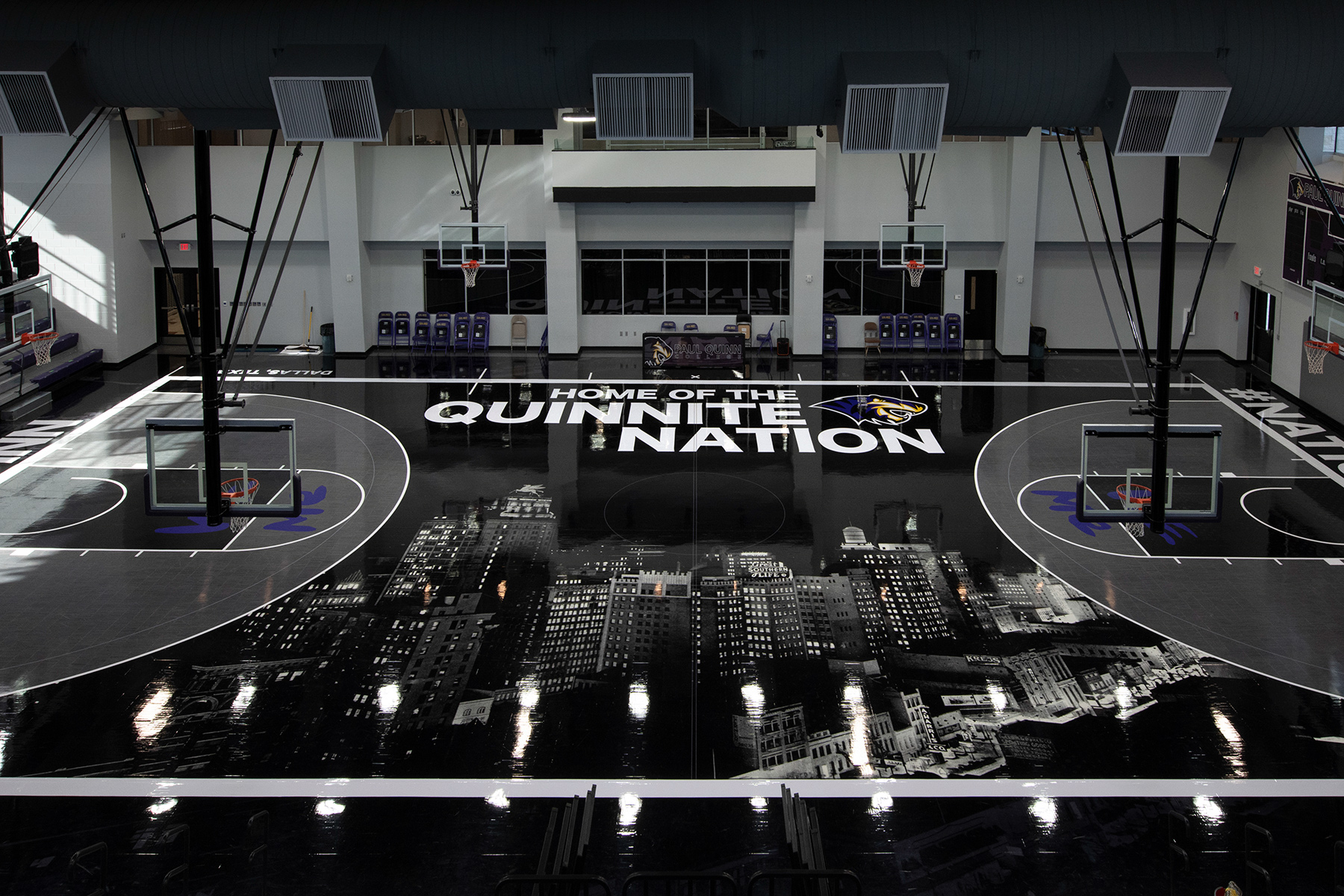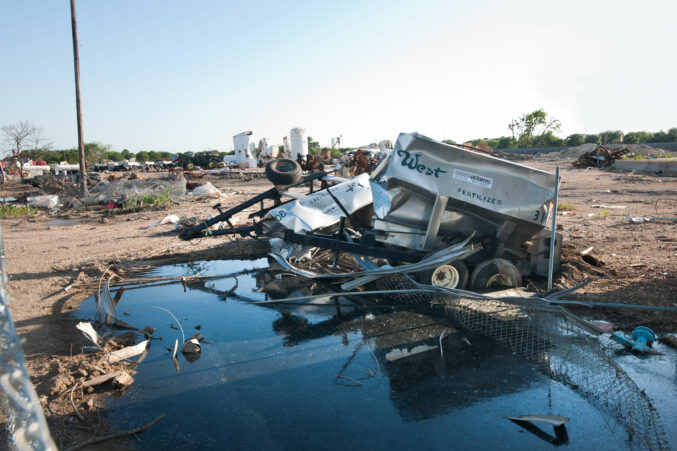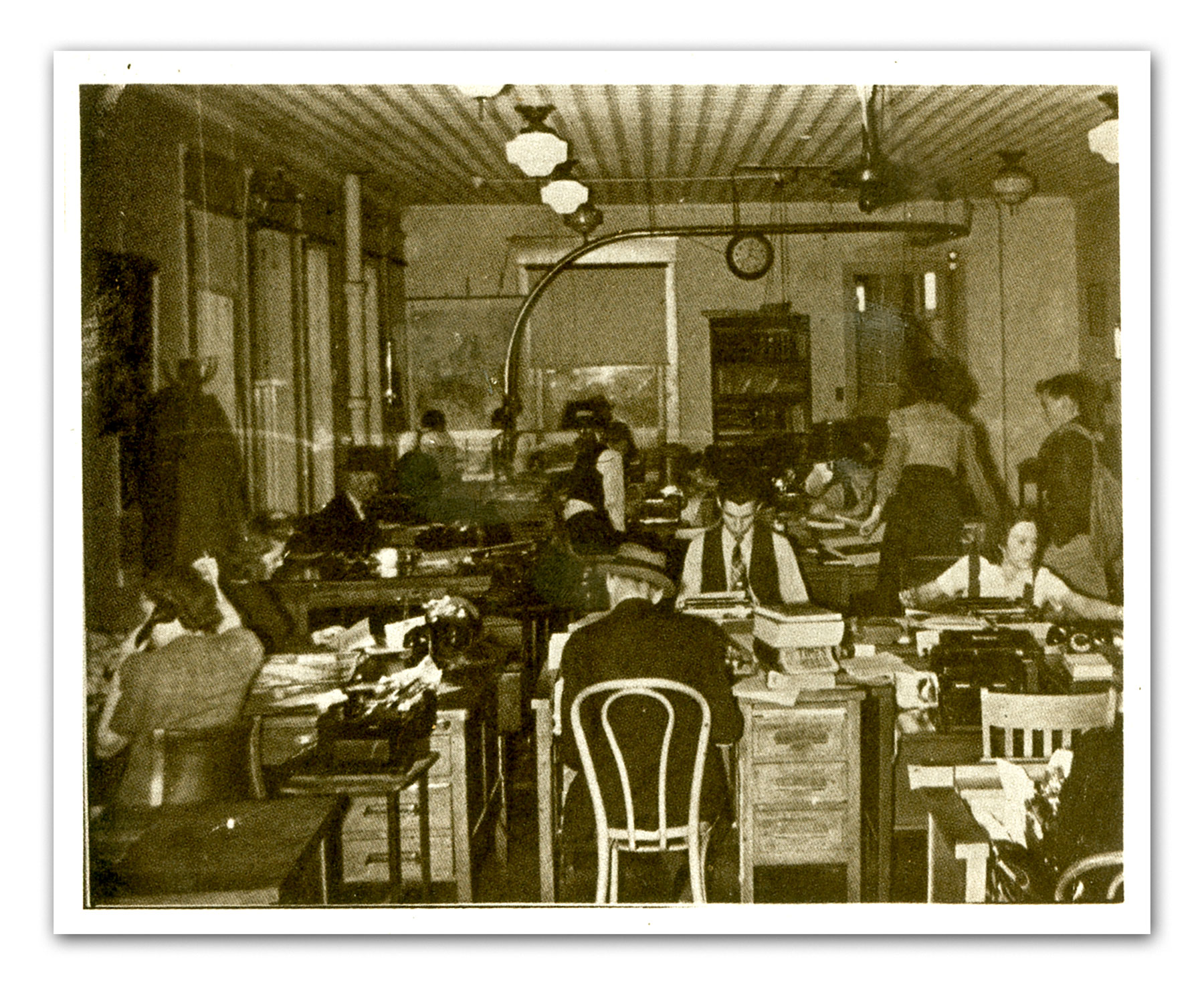To commemorate its 150th anniversary, Paul Quinn College, the oldest historically Black university in the state, wanted to do something on a similarly momentous scale. The school has endured generations of anti-Black public policies, particularly during Reconstruction and the Jim Crow era, and, more recently, its leadership has watched as state and local policy makers seek to limit how that history is taught and recognized.
Looking back at these years, Paul Quinn President Dr. Michael Sorrell wanted to find a way to highlight this story, to remind people that it wasn’t that long ago that Black Americans were not welcome in downtown Dallas.
Sorrell found a perfect canvas: the school’s basketball court in its new gym.
“Historically Black Colleges were founded with an acknowledgement that, for the American experiment to be fully realized for all of its citizens, there are going to need to be some extraordinary steps,” he says. Steps, like the creation of the nation’s first urban college work model: a higher education program where low-income students are introduced to high-paying careers through off-campus internships, organized by direct partnerships with local corporations.
HBCUs like Paul Quinn were founded to educate recently freed enslaved people and economically marginalized individuals. The existence of HBCUs in the state and national consciousness is a physical reminder of the antiquated racist policies that built the southern United States.
Their existence signifies the advancement of oppressed people, who, at the time of Reconstruction, had to fight for the basic privilege of education. Sorrell describes the plight of HBCUs as the actualization of the American Dream.
He says Paul Quinn’s model has reduced its students loan debt from an average of $40,000 to $10,000, and resulted in successful partnerships with the Dallas Independent School District, KIPP schools, and an expansion to a satellite campus in Plano. There, students participate in competitive roles at JP Morgan Chase, Toyota, and other companies with significant footprints in North Texas.
Sorrell believes the model is a sustainable way to eradicate intergenerational poverty. Despite the well-earned success and reception of the urban college work model at Paul Quinn, he acknowledges the continuous fight of HBCUs in a state and nation that have attempted to revise and massage American history, especially in the classroom.
“What is particularly insidious about these attempts to rewrite history is if they succeed, the logical place that you wind up is, why do Black colleges exist?”
To ensure Dallas and the world remembers the history of the city’s relationship with race, he hired Dallas-based designer Ryan Parker, founder of Free Key Three Creative, to come up with an image of the Dallas skyline from the 1920s to cover the Tigers’ basketball court at its new gym.
The decade was chosen because it was a time when African Americans were barred from the city’s downtown.
“In terms of celebrating this, we arrived at this moment, where we are surrounded by Southlake and Colleyville,” Sorrell says, referencing those cities’ recent debates about critical race theory that has limited instruction. “They seek to deny basic American history. And, to a larger extent, [so does] the state of Texas, which is attempting to codify oppression and ignorance.”
Sorrell’s hope is that the basketball court will educate visitors about the history of HBCUs, specifically the long-standing racist policies that excluded African Americans from higher education in the South.
“For us,” he says, “this is an opportunity to stand on the shoulders of incredible men and women who built this city, built this state, and built this country.”
Get the FrontRow Newsletter
Author







